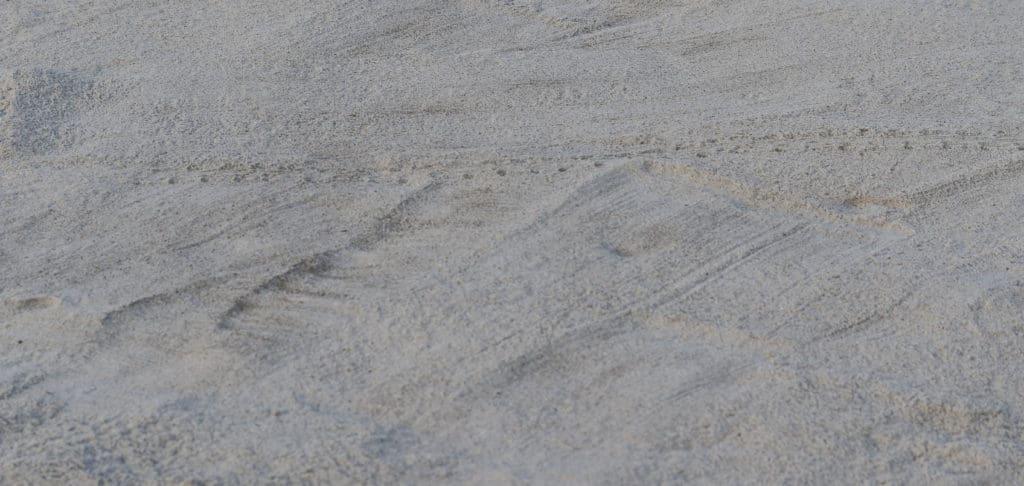Creature Feature

Giving Endangered Turtles a Fighting Chance
By Wayne Bierbaum
At the end of August, I took a trip to Topsail Beach, North Carolina. I do have to say that I was disappointed with the lack of concern about COVID-19 there. I brought my own food but considered having a meal outside of a restaurant but none of the staff was wearing a mask, so I didn’t. There were also many shoppers that ignored the requests from stores to wear a mask. I wore an N95 mask, which I picked up at a hardware store last year. I ended up spending most of my time at the beach.
While at the beach, I saw four loggerhead turtle nests protected by a wire mesh covering and a barrier of stakes and hazard tape. The wire mesh was for protection from predators like dogs, raccoons, birds, etc. The hazard tape was for protection from curious or clumsy people. I spoke to several members of the Topsail Turtle Project and was able to participate in a nest watch. A volunteer from that group, Pat Dareau verified the information I was collecting. She has been volunteering for seven years.
Loggerhead turtles are the most common turtle along the Atlantic coast and are found throughout the world. They are very long-lived, over 90 years. Even females do not reach sexual maturity until they are over 35 years old. They are also quite large, with a fully grown adult weighing in at 350 pounds and record weights of 1,000 pounds.
The name loggerhead comes from their large muscular heads. They have strong jaws for feeding on shellfish, like conchs and whelks. They are carnivores that feed on fish, crabs, jellyfish, and easy prey like sea urchins.
Loggerheads nest on beaches from Florida to North Carolina. Every two to four years, mature females return to where they hatched to dig a hole above the high tide line and lay their eggs. They spend hours at night constructing a jug-shaped nest with an egg chamber 18 inches below the sand surface. In one night they lay 80 to 130 leathery round eggs. Loggerheads will return to the site every other week, for up to three more rounds. They can produce almost 500 eggs in one season. The temperature of the nest helps determine the sex of the turtle. Cooler temps, like in Topsail Island, have more males develop. In Florida, the warmer sand has a larger percentage of female development.
The young will hatch en masse about three weeks after being laid. Both the eggs and the hatchlings are vulnerable in this critical time. That is when the volunteers and experts from the Karen Beasley Sea Turtle Rescue and Rehabilitation Center get to work, managing incubation and hatching. On the 23 miles of the island’s coast, about 120 nests are laid each summer, the product of about 50 turtles. Since they return on average every 3 years, 150 turtles call Topsail their nesting home.
The nest I was watching was probably laid by a young first-timer. She laid the eggs below the high tide line and all 86 eggs had to be moved to a man-made nest. On Aug. 26, the top of the nest collapsed, showing that the eggs were hatching and the young were resting and absorbing their yolk sac. They were getting ready to race to the ocean.
Black plastic was placed to block out the bright lights of a fishing pier. A wide broom was used to smooth the loose foot-printed sand all the way to the hard wet sand. At sunset, a dozen people waited for the young turtles to escape to the ocean. The young need to make the scamper to the water on their own to become imprinted to their birth beach so they can return later.
I waited for over two hours in the dark, no lights were allowed, and gave up. The young turtles took off for the water at midnight. Some of the young took off for the brightly lit pier and had to be redirected. The hatching was quite successful. Unfortunately, only one in a thousand baby turtles will survive to sexual maturity.
Populations of loggerheads are an endangered species due to many factors, such as the presence of plastics in the ocean, which they mistake for a jellyfish dinner; entanglement in fishing nets; boat strikes; nesting stress; human development; and climate change affecting their feeding grounds. We should all avoid using plastics and stop tossing old fishing line and netting in the water. To prevent turtle drowning, shrimp trawlers are now using turtle excluder devices.
Loggerhead turtles range for thousands of miles and are frequently seen in the Chesapeake Bay, where they feed on what they can find, such as crabs and horseshoe crabs. Let us know if you see one of these huge turtles in the Bay.
